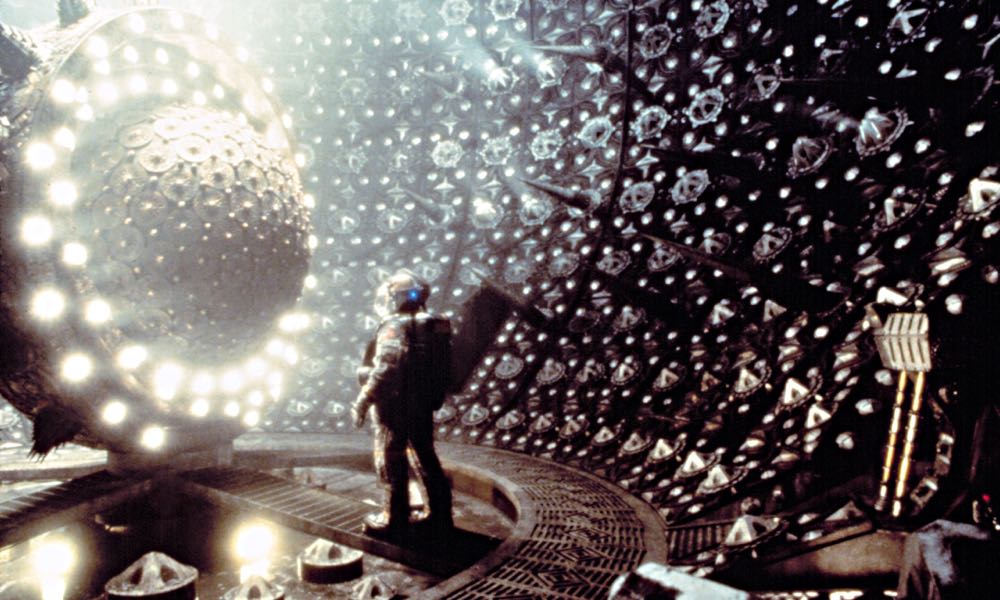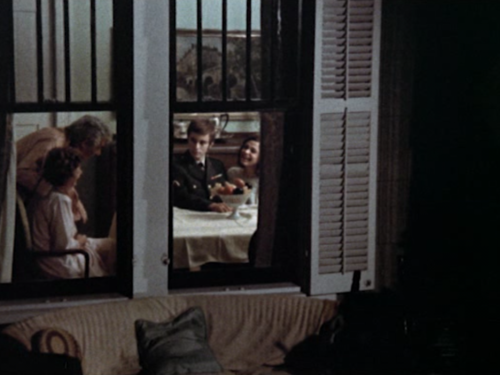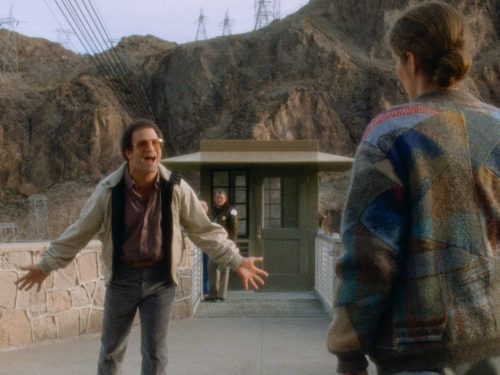Paul W.S. Anderson’s allusion-heavy Event Horizon (1997) mines terrors of the past to show that the horrors we know have always been around — and always will be
It’s a strange thing to live through an unprecedented moment in American history that also, somehow, feels entirely familiar. The coronavirus pandemic has exacerbated the manifold crises of contemporary America: An enormous and ever-increasing disparity in economic equality; a nationwide system of policing that kills Black people, and which is only further empowered politically and economically despite admirable, decades-long work of activists; a political infrastructure that is completely incapable of doing anything at all to mitigate either the spread of the virus or the financial consequences of the lockdowns; and, of course, there is the total unwillingness from all but a very few American politicians to do anything about the seismic devastation from climate change that is only worsening every year, and is only made worse in the midst of a health crisis with no end in sight.
And yet, it feels like we’ve lived through this world already. We’ve seen and heard these images and sounds of pain and hopelessness before. The dystopian blockbusters that have proliferated in the 21st century predicted where the US (and much of the rest of the world) was heading. Minority Report (2004) dramatizes a ruthlessly efficient police and surveillance state that forgoes even the pretense of respecting civil liberties and due process. Children of Men (2006) is similarly attuned to the abuses of state power targeted against climate, economic, and political refugees. I Am Legend (2007) anticipates what the world will look like after a plague ravages the planet. And Mad Max: Fury Road (2015) offers us a vision of what the logical end result is of all these issues — a socio-ecological landscape that is, at best, bleak and, at worst, schizophrenic. And while it does not immediately scan as dystopian, there is Contagion (2011), which anticipates the breathlessness of our current pandemic, even if it is almost too optimistic to bear right now.
It’s almost hard to believe that during the 1990s we were able to imagine staving off our own destruction. Independence Day (1996), Armageddon (1998), and Deep Impact (1998) make up the triumvirate of films in which people are able to work together to stop the apocalypse, whether that be from an asteroid or alien invasion. As a matter of fact, a high volume of alien invasion and contact films in the 1990s trended toward the satirical: Mars Attacks! (1996), Starship Troopers (1997), and Galaxy Quest (1999), and we might even put Space Jam (1996) in this. The decade also saw serious approaches to what it would mean, scientifically and spiritually, for us to encounter alien life. The Abyss (1989) starts the decade this way, but Contact (1997) is the sci-fi epic that closes it. Here, making contact with alien life is equated to making communion with the divine: Dr. Ellie Arroway (Jodie Foster) is determined to communicate with extraterrestrials, and she is forced to question her atheism and her “faith” in science by Christian public intellectual Palmer Joss (Matthew McConaughey). When Ellie finally meets the aliens, the religiosity of the experience is on full display: The aliens send an emissary to Ellie, and “he” has taken the form of her father (played by David Morse) to put her at ease for the conversation, because humans are not ready to witness the true form of the aliens. But, with enough faith in science, the film implies that humans will reach a point where they are able to fully communicate with alien life.
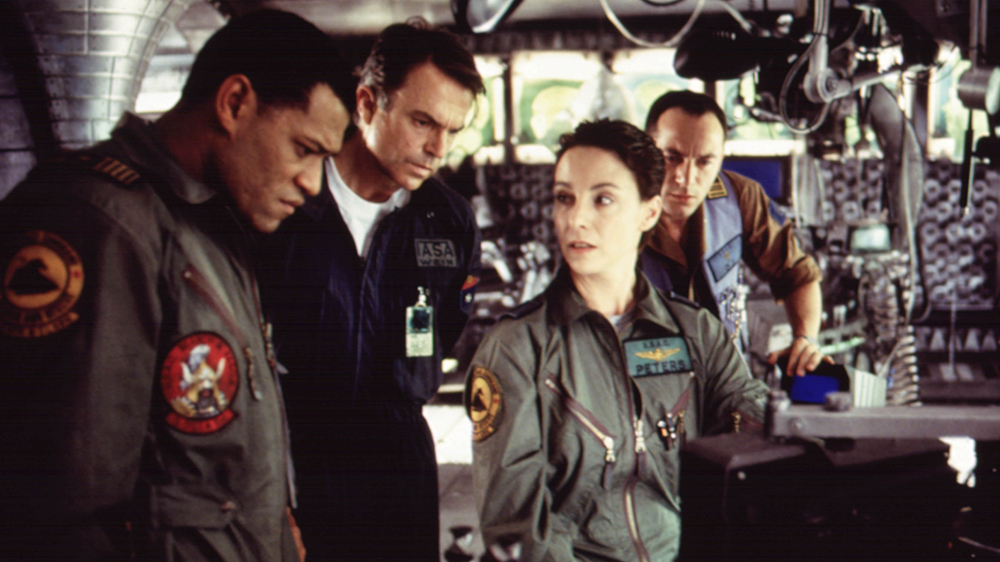
Now that we’re two decades into the future Contact looks forward to, we’re faced with an ironic twist of fate: In 2020, we’re closer to finding evidence of alien life than we ever have been before, and it doesn’t do anything to penetrate the cultural imagination or news cycle. For sometimes good and sometimes bad reasons media outlets ceaselessly cover President Trump, which means that once-in-a-lifetime stories like the potential for contact with alien life fall down the memory hole. On top of that, it’s also hard to care much about the prospect of intelligent life existing somewhere out in space when just the prospect of keeping contact with other humans has taken on a certain alien dimension of its own. In more ways than one, we are trapped and looking out. We’re trapped in our bodies. The luckiest of us are trapped in homes, with the same people every day, safe at least from the plague. Others of us are trapped laboring under potential exposure to the coronavirus. We’re trapped in a system that just doesn’t work, and we could see it coming all along.
Even though Contact and other films like it from the late 1990s feel out of step with the world we live in today, one sci-fi/horror film from that decade has proven to be fitting for our experience of entrapment: Event Horizon (1997). Watching it the first time, it’s tempting to dismiss Paul W.S. Anderson’s film as a cheap knockoff of Alien (1979). The story is set in 2047, where the Event Horizon, a starship capable of traveling faster than the speed of light, has resurfaced after mysteriously disappearing seven years prior. The rescue vessel known as the “Lewis and Clark,” helmed by Captain Miller (Laurence Fishburne), has been dispatched to bring Dr. William Weir (Sam Neill) to investigate the circumstances of the Event Horizon’s return. We learn that Weir designed the ship and its gravity drive mechanism that creates a blackhole in space-time, thus making it possible for the Event Horizon to travel impossibly vast distances in no time at all.
Miller and his crew are less than enthused about having to complete one last mission before they can return home after being away for years. Once they board the mysterious ship they have even more reason to want to leave. The Lewis and Clark expedition learns that the Event Horizon crew have been slaughtered. They see images of the crew bloodied, crying out in agony, attacking each other (possibly including raping each other); one of them has gouged out his own eyes and is holding them out in front of him as he says in Latin, “Liberate tutemet ex inferis” (“liberate yourself from Hell”). Soon after, the Lewis and Clark crew begins to be haunted by hallucinations from their past or their lives at home. Miller, for instance, is tormented by visions of a crew member that he left for dead on a previous mission; Weir is visited by his dead wife, her eyes removed, as she beckons him to return to her. Possibly motivated by his desire to be reunited with his wife, or perhaps by his scientific curiosity, Weir becomes possessed by the ship, and we learn that “he” wants to take it and the Lewis and Clark crew back to the hell dimension that the Event Horizon traveled back from. Weir kills, or attempts to kill, those who will resist this fate. In an act of self-sacrifice, though, Miller explodes part of the Event Horizon, seemingly killing Weir and himself, and allowing his remaining two crew members to escape, traumatized, in the front of the starship.
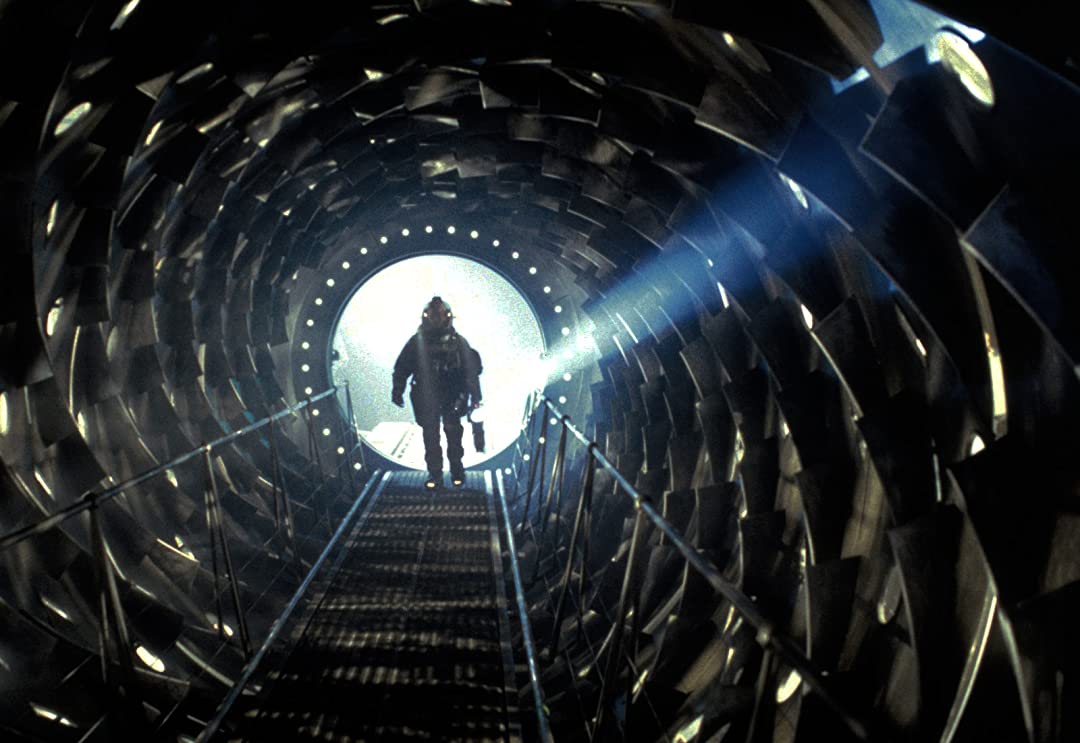
Like Alien, Event Horizon is a space horror film about an isolated crew tormented by a ravenous, inhuman presence. And in different ways, the films both deliver a feeling of entrapment. In Alien, this is communicated in part by the mise-en-scène — the darkly lit shots, of course, but also the winding corridors of the Nostromo that suggest that the xenomorph monster might be around any corner at any moment. In Event Horizon, Anderson accomplishes this motif of entrapment not through mise-en-scène, but mostly through narrative and through references to other films, like Alien. As previously noted, the Lewis and Clark crew does not want to bother with investigating the Event Horizon, but Weir compels them to. Even when they are presented with evidence that tells them clearly to turn back (i.e. the video from Hell) they do not. They cannot leave the ship except through death or the miraculous escape Miller engineers. Weir curses them to this fate, long before they set foot on the haunted Event Horizon. Indeed, from the moment Weir joins the Lewis and Clark team and informs them of their mission, he essentially carries the narrative function of an emissary, or even, a sort of ghost beckoning the arrival of prospective victims to a haunted house. I don’t mean to say that Weir was a malicious character from the beginning, where he comes off as a normal scientist excited to learn what the Event Horizon has to teach him about where it’s been. Nevertheless, Weir’s very curiosity is what dooms the Lewis and Clark crew, especially when Weir forces the team ahead as they face suffering and death from the ship. In his rigid indifference, Weir is something of an echo of Ash (Ian Holm) from Alien, whose true mission is to collect information on the xenomorph at the expense of everyone else aboard the Nostromo.
Therein, Weir carries a double function. On one level, Weir brings the Lewis and Clark team to the Event Horizon (as an innocuous scientist) and contains most of them there (as a possessed scientist). On another level, Weir brings the audience into Event Horizon as a film and keeps them invested in his character, precisely because he feels so familiar to Ash, an idea supported by the general premise and style of the film being so close to Alien. Yet this is not the only allusory way Weir draws audiences to the film, because as much as Event Horizon resembles Alien, it also resembles Solaris (1972) where psychologist Kris Kelvin is dispatched to the space station near the planet Solaris to investigate the crew’s claims of seeing hallucinations. While there, Kelvin is haunted by manifestations of his dead wife, Hari, which drives him to madness. He projects his consciousness onto the surface of Solaris, where he chooses to live instead of returning to Earth. I wouldn’t venture that there is a one-to-one correlation between Event Horizon and Solaris, but there is a familiar rapport between the films: the ship torments Weir and everyone else with hypnotizing visions, and Weir’s desire late in the film to travel back to Hell, and to bring whoever he can with him, is roughly analogous to Kelvin wanting to live on Solaris.
There is nothing inherently horrifying about Anderson’s references to these other films, even if Alien and Solaris are disturbing in their own ways. And these are not the only films Event Horizon calls back to: At one point, a torrent of blood surges out of the gravity tank in the Event Horizon, in an obvious nod to the elevator in The Shining (1980); and when Weir has fully transformed into a demonic figure by the end of the film, his face is the same bluish-white hue of Pinhead from Hellraiser (1987), though instead of pins Weir’s face is marked by strange black lacerations.
These familiar allusions are where the film’s sinister horror lies. We don’t see a world outside the walls of the Event Horizon. Likewise, everything that happens on the ship has also happened or appeared, to some degree, in the other films that Anderson alludes to. Not only are the characters trapped aboard the Stygian ship, but so are we as viewers trapped in a film that has surfaced from the depths of horror and sci-fi cinema. Essentially, Alien, The Shining, Solaris, and Hellraiser all haunt Event Horizon, with each reference carrying the function of a hallucination for the audience: We see these little, uncanny reminders of past films that feel both familiar and alien. Consequently, these citations become a little less horrifying in themselves, for the knowing audience, because they’ve already disturbed viewers before. But the purpose of these references, I think, is not to frighten us anew. Rather, it creates the impression of inescapability, of inevitability: There is nowhere else for Event Horizon to go as a film, or for viewers to go emotionally or intellectually, than to the other landmark works that shape Anderson’s movie. Indeed, the cosmos of sci-fi and horror cinema, as Anderson presents it, has already been mapped out and settled.
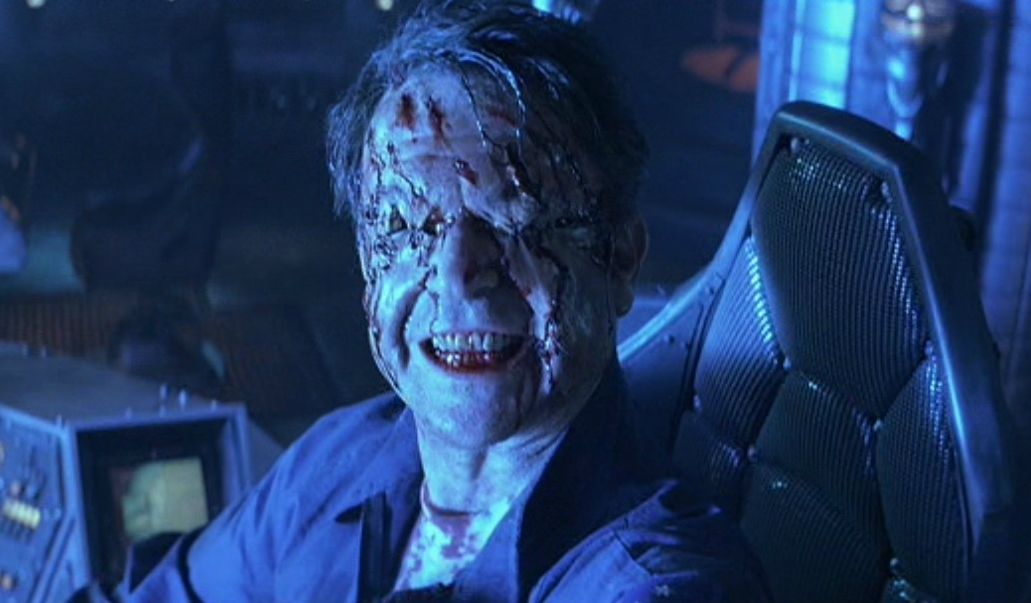
This is what makes the most iconic line in the film so striking to me. Toward the end of the film, Miller finds Weir sitting in the captain’s seat of the Event Horizon, looking half-dead with his eyes ripped out and his face covered in blood. Miller asks Weir about his eyes, and he responds, “Where we’re going, we won’t need eyes to see.” He then proceeds to explain his intent to return the ship to Hell. Weir comes off as at once tired and expectant, knowing and still curious. And we can certainly interpret the line on these terms: Weir wants to make the spiritual voyage, where body and soul will be tormented into oblivion, as had happened with the Event Horizon’s original crew.
We can also read this line as a more abstract comment on the film itself: You don’t need eyes to see Event Horizon because you’ve been through this film before. In fact, you haven’t left it since the 1970s, and you’re not going to be able to break free of it. Event Horizon makes no pretense of breaking new ground, and it turns precisely that into its own bleak and soul-wrenching meta-cinematic horror.
Find more October Horror 2020 here:
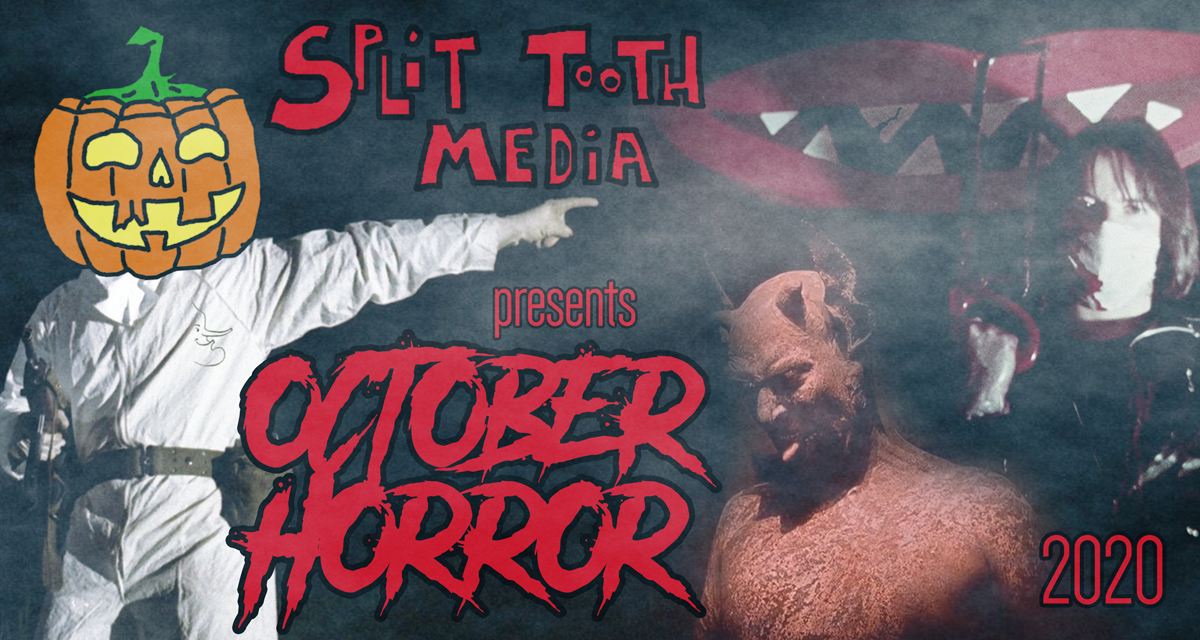
Follow Split Tooth Media to stay up to date with all things October Horror
(Split Tooth may earn a commission from purchases made through affiliate links on our site.)

